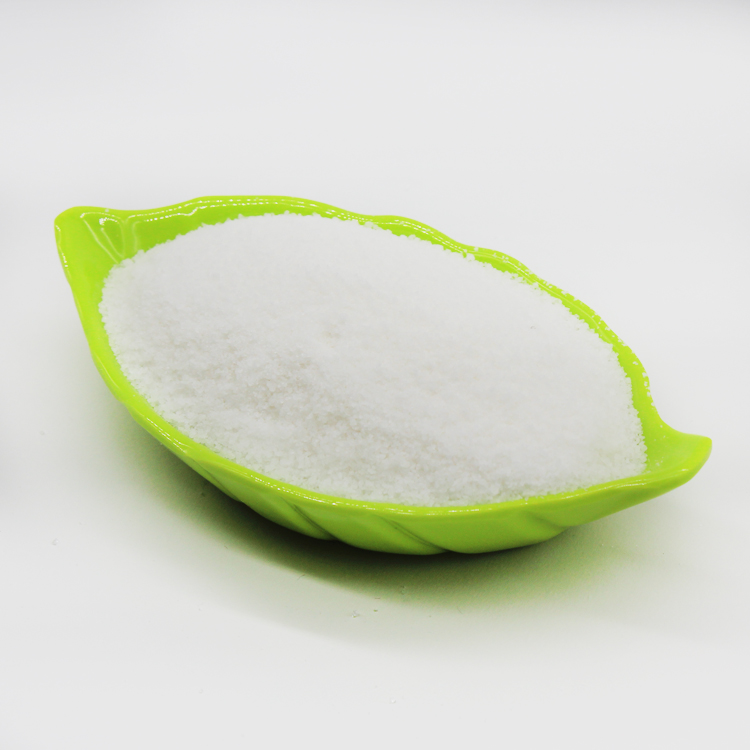Anionic Polyacrylamide APAM
Polyacrylamide is a product with a wide range of applications, especially in the field of water purification. Polyacrylamide can also be called PAM. The models can be divided into anionic, cationic, nonionic and zwitterionic, among which cationic and anionic are used more.
Anionic polyacrylamide (APAM) is mainly used for flocculation and sedimentation of various industrial wastewater, and sedimentation and clarification treatment. Such as steel plant wastewater, electroplating factory wastewater, metallurgical wastewater, coal washing wastewater and other sewage treatment, sludge dehydration, etc. It can also be used for clarification and purification of drinking water. Because its molecular chain contains a certain number of polar groups, it can absorb solid particles suspended in water to bridge between particles or agglomerate particles to form large flocs through charge neutralization, so it can accelerate particles in suspension. The sedimentation has a very obvious effect of accelerating the clarification of the solution and promoting filtration.
Anionic polyacrylamide APAM information
| Product name | Anionic Polyacrylamide APAM | ||||||
| Appearance | White granular powder | ||||||
| Product model | A7000 | A7100 | A7150 | A7250 | A7600 | A7800 | A7900 |
| Molecular weight | Very Low | Low | Medium | High | Mid High | Mid High | Low |
| Hydrolysis Degree | Very Low | Low | Low | Medium | Medium | High | High |
| Solid content (%) | ≥90 | ||||||
| pH Value | 4-12 | ||||||
| Dissolution time (Min) | ≤90 | ||||||
| Remaining monomer (%) | ≤0.1 | ||||||
If you want to know more product models and details, please contact us.
The principle of action of anionic polyacrylamide APAM
1) The principle of flocculation: when PAM is used for flocculation, it is related to the surface properties of the flocculated species, especially the kinetic potential, viscosity, turbidity and pH value of the suspension. The dynamic potential of the particle surface is the reason for particle inhibition. PAM with opposite surface charges can reduce the kinetic potential and aggregate.
2) Adsorption and bridging: PAM molecular chains are fixed on the surfaces of different particles, and polymer bridges are formed between the particles, so that the particles form aggregates and settle.
3) Surface adsorption: various adsorptions of polar group particles on PAM molecules.
4) Reinforcing effect: PAM molecular chains and dispersed phase implicate the dispersed phase together through various mechanical, physical and chemical effects to form a network.
The scope of application of anionic polyacrylamide APAM
1. Used in textile, printing and dyeing industries. Polyacrylamide is used as a sizing agent for fabric treatment, as a finishing agent, and as a protective layer that can create softness, anti-wrinkle, and anti-mold. Utilizing its strong hygroscopicity, it can reduce the break rate when spinning spun yarn. Polyacrylamide as a post-treatment agent can prevent static electricity and flame retardancy of the fabric. When used as printing and dyeing auxiliaries, polyacrylamide can make the product have high adhesion fastness and high brightness, and it can also be used as a non-silicon polymer stabilizer for bleaching.
2. Mainly used as flocculant. For suspended particles, coarse, high concentration, positively charged particles, and neutral or alkaline sewage water pH value, since the anionic polyacrylamide molecular chain contains a certain amount of polar groups that can absorb solid particles suspended in water, so that Bridging between particles forms large flocs. Therefore, it accelerates the settling of particles in the suspension, and has a very obvious effect of accelerating the clarification of the solution and promoting filtration. This product is widely used in the treatment of chemical industrial wastewater and waste liquid, and municipal sewage treatment. Tap water industry, high turbidity water purification, sedimentation, coal washing, mineral processing, metallurgy, iron and steel industry, zinc, aluminum processing industry, electronics industry and other water treatment.
3. Used in petroleum industry. Oil recovery, drilling mud, waste mud treatment, prevention of water channeling, reduction of friction, enhanced recovery, and tertiary oil recovery are widely used.
4. Used in paper industry. One is to improve the retention rate of fillers and pigments. In order to reduce the loss of raw materials and environmental pollution; the second is to increase the strength of paper (including dry strength and wet strength). In addition, the use of PAM can also improve the tear resistance and porosity of paper to improve visual and printing performance. In food and tea wrapping paper.
5. Other industries. In the food industry, it is used for cane juice clarification and syrup phosphorus floatation extraction in the production of cane sugar and beet sugar. Enzyme fermentation liquid flocculation and clarification industry, also used for the recovery of feed protein, stable quality, good performance, the recovered protein powder has no adverse effects on the survival rate of chickens, weight gain, egg production, synthetic resin coatings, civil engineering grouting materials plugging Water, building materials industry, improvement of cement quality, construction industry adhesives, joint repair and water blocking agent, soil improvement, electroplating industry, printing and dyeing industry, etc.
The difference between anionic polyacrylamide APAM and cationic polyacrylamide CPAM
1. Price factor: Anionic polyacrylamide APAM is cheaper than cationic polyacrylamide CPAM, and the molecular weight of anion is higher than that of cation.
2. Molecular weight: The molecular weight of anionic polyacrylamide is 6-18 million, and that of cationic polyacrylamide is 8-12 million.
3. Different indicators: Anionic polyacrylamide APAM is negatively charged, and its main indicators are molecular weight and degree of hydrolysis. Cationic polyacrylamide CPAM is positively charged, and its main indicators are ionization degree and molecular weight.
4. The pH value is different: Generally, the anionic type is alkaline, and the cationic type is neutral.
5. The effect after use is different: Judging from the flocculation effect, the flocs formed by cationic polyacrylamide CPAM are large and dense, while the flocs formed by anionic polyacrylamide APAM are small and dispersed.
6. The use environment is different: Anionic polyacrylamide APAM is suitable for the suspension of positively charged inorganic suspended matter, and the suspended particles are relatively thick (0.01-1mm). Cationic polyacrylamides CPAM are suitable for the suspension of negatively charged and organic substances.
7. Different uses: Anionic polyacrylamide APAM is mainly used as a flocculant for sewage treatment. It is often used to treat inorganic wastewater, such as coal mine wastewater treatment, sand washing plant, coal washing plant, and steel wastewater. Cationic polyacrylamide CPAM is mainly used as a flocculant for sewage treatment to treat organic wastewater, such as wastewater from food factories, wastewater from sugar factories, wastewater from monosodium glutamate factories, sludge dehydration, etc.





